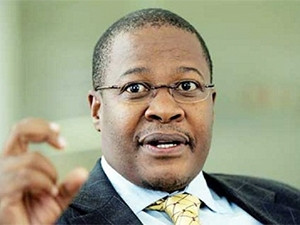
Eskom, in collaboration with the Council for Scientific and Industrial Research (CSIR) National Laser Centre (NLC), has developed mobile laser beam welding technology for repairing leaks and cracks in stainless steel water reservoirs.
A laser beam welding research facility has been established at the CSIR NLC to support Eskom's maintenance programme for dealing with various maintenance challenges on high-value equipment such as precision weld repairs on turbine blades.
By implementing this technology, the utility can save money and extend the production lifespan of its turbines.
Eskom says a large number of turbine blades are scrapped during turbine maintenance and repair projects since the tenons of blades need to be ground down to remove the blades from the turbine rotor.
Removed blades cannot be used again as the remaining tenon stub is too short to be riveted a second time, it adds.
Eskom explains that by rebuilding the tenons by welding, it is a viable and cost-economic option to repair the blades for further use and should result in substantial cost savings.
Research synergies
Eskom and the CSIR recently signed a partnership which seeks to synergise the research capabilities of the two state-owned organisations in support of Eskom's strategic and operational needs.
The overall accountability to manage the agreement will reside within Eskom's Research, Testing and Development business unit. The deal covers the next five years and is aimed at aligning and enhancing interaction between the organisations in support of national goals.
"The partnership will further strengthen our collaborative relationship and, accordingly, this agreement provides for collaboration to establish a long-term relationship to perform scientific and operational research and evaluation tasks, and provide scientific decision support in support of Eskom's strategic and operational needs," says Eskom group CEO Brian Molefe.
"We look forward to collaboration with the CSIR as we forge ahead with delivery on our mandate of ensuring reliable power to stimulate economic growth for our country and address socio-economic challenges faced by our people. We will prioritise projects that will ensure our operational and financial sustainability as we refurbish our current plant and deliver on new infrastructural projects to provide much-needed electricity," adds Molefe.

Dr Sibusiso Sibisi, CSIR CEO, says energy is one of the CSIR's areas of focus. The CSIR's vision in this area is to help the country achieve an energy-secure and low-carbon national economy.
"Together, Eskom and the CSIR can come up with innovative solutions for current and future energy issues, determine what the new electricity system will look like, and what the plans and responses should be that need to be put in place to build the future South African energy system," says Sibisi.
To address its short-term requirements, Eskom has identified three imperatives that have been expanded to identify new and existing technologies and capabilities that can address specific challenges.
Top priorities
The first imperative relates to the availability and reliability of the existing asset base. The organisations will work together on extending the transmission component's lifespan through predictive maintenance; real-time grid monitoring using the Advanced Fire Information System; laser-based refurbishment of high-value components; development of a joining technology and non-destructive testing centre to improve build and maintenance quality; analytical testing to ensure environmental compliance; and robotics and unmanned air vehicles for maintenance.
The second imperative is aimed at safely delivering on the new build programme and capacity management. Research and development will focus on the reduction of water consumption; development of advanced emission control technologies; development of components for use in advanced high-temperature gas reactors and modelling of associated technologies; load forecasting; and smart energy management systems.
The third imperative focuses on financial sustainability. Aspects to be jointly investigated include security risk management solutions to prevent theft and safeguard high-value assets; cable and infrastructure theft detection and prevention; smart meter protection; and detection and prevention of illegal connections and revenue theft.
To administrate the agreement, a bilateral committee is in place made up of CSIR and Eskom executives that meet to discuss potential projects that will further be considered by delegated steering groups. The overall Eskom accountability to manage the agreement will reside within the Transmission and Sustainability Division of Eskom and the Research, Testing and Development business unit in particular.
The partnership will enable the CSIR and Eskom to garner more value from the relationship that is also increasingly being promoted by the principal stakeholders of the two organisations, the Department of Science and Technology and the Department of Public Enterprises.
Share